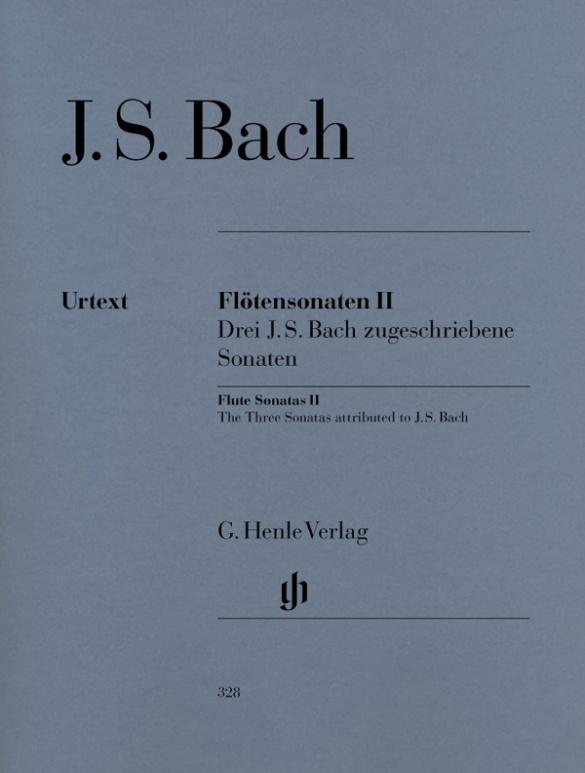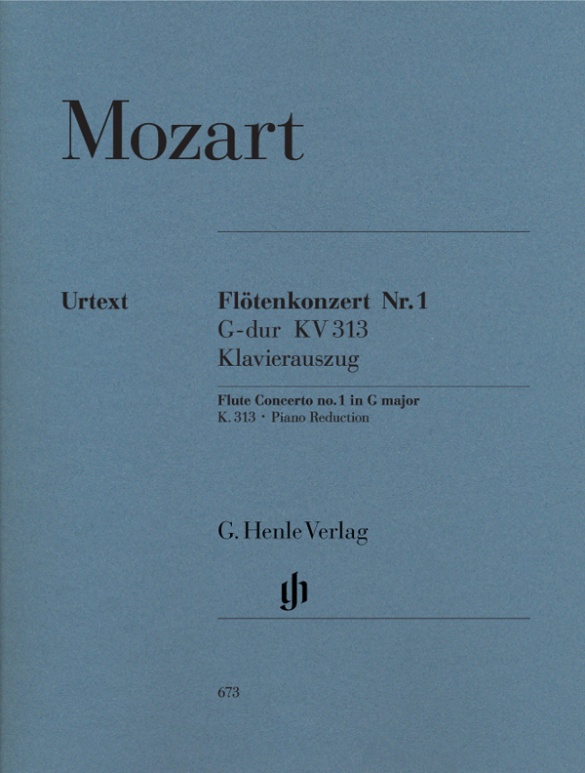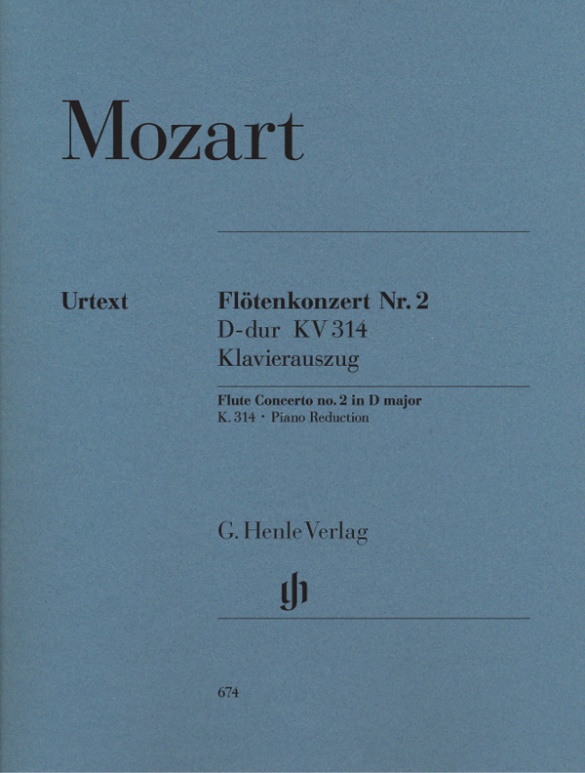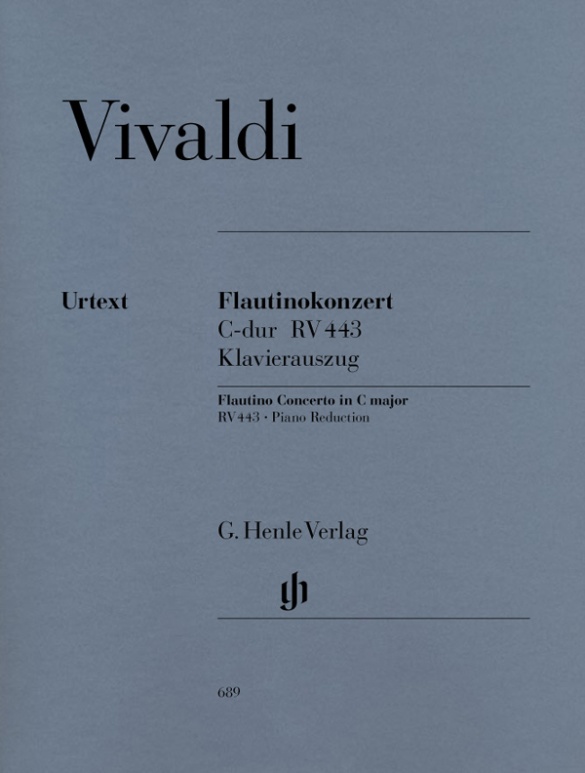

Antonio Vivaldi
Flautino Concerto (Recorder/Flute) C major RV 443
In his autograph of this concerto Vivaldi writes “Flautino” – which does not make it quite clear whether the work is to be played on the f-soprano (sopranino) recorder or on the piccolo transverse flute. Since the latter is obligatory for auditions with orchestra, one often encounters the lively and musically invigorating concerto in the piccolo version.
Content/Details
About the Composer
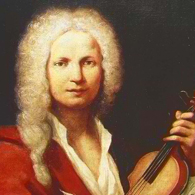
Antonio Vivaldi
He earned his fame as a violin virtuoso and composer primarily from (over 500) instrumental concerti, whose Baroque model (three movements, ritornello form) he created. He also wrote numerous operas.
| 1678 | Born in Venice on March 4, the son of a barber and violinist. Musical instruction probably from his father. |
| 1703 | Ordination and appointment as violin teacher at the Ospedale della Pietà; around 1716 Maestro de’ Concerti. Writes violin music and sacred works. |
| 1711 | Publication of Vivaldi’s Op. 3, “L’Estro Armonico,” the most influential concerti of the first half of the eighteenth century. |
| 1713 | Successful premiere in Vicenza of his first opera “Ottone in villa.” He then becomes active as composer and impresario at the Venetian Teatro Sant’Angelo, where he performs his own and others’ compositions. |
| around 1716 | Publication of the concerto collection “La stravaganza,” Op. 4. |
| 1718–20 | As Maestro di Capella a Camera at the court of the governor of Mantua, Prince Philip of Hesse-Darmstadt, he is responsible for secular music. |
| from 1720 | Numerous travels to Rome and Vienna, perhaps even to Prague. |
| 1724 | Performance in Rome of his opera “Giustino.” |
| 1725 | Publication of the concerto collection “Il Cimento dell’Armonica e dell’Inventione,” Op. 8, which opens with the “Four Seasons.” |
| 1727 | Premiere in Venice of the opera “Orlando (furioso)”; publication of the concerto collection “La Cetra,” Op. 9. |
| 1732–36 | Opera performances in Verona and Venice. |
| around 1740 | He decamps for Vienna. |
| 1741 | Dies in poverty in Vienna on July 28 |
About the Authors
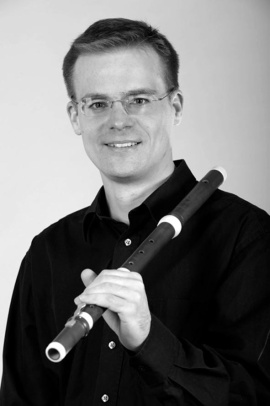
Henrik Wiese (Editor)
Henrik Wiese was born in 1971 in Vienna. He first studied the flute with Paul Meisen (Munich). He later took a degree in Indo-European studies, general linguistics and musicology. From 1995 to 2006 he was solo flautist at the Bavarian State Opera (Munich), since 2006 he has held the same position with the Bavarian Radio Symphony Orchestra. Wiese was a prize-winner at the German Music Competition (1995) and at several international flute competitions (including the ARD Music Competition in 2000).
As part of his editorial work for G. Henle Publishers, studying sources led him to historical performance practice and the transverse flute. He plays this instrument with the Accademia giocosa. Wiese gives master-classes around the world and tries to impart an understanding of how to deal with editions and sources to his pupils, to show them how to write cadenzas and to hone their awareness of intonation. His artistic work as a soloist, chamber musician and orchestral musician has been documented on numerous CDs.
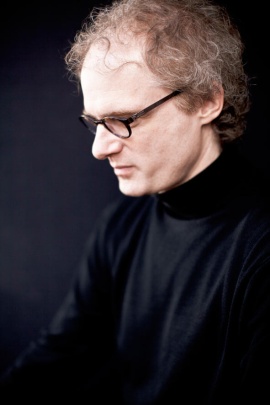
Jan Philip Schulze (Piano reduction)
Prof. Jan Philip Schulze received his piano education at the Musikhochschule in Munich and at the Tschaikovsky Conservatory in Moscow. He began his varied international career by winning awards at competitions in Italy, Spain and South Africa.
As a lied accompanist he has regularly given concerts with Juliane Banse, Annette Dasch, Rachel Harnisch, Dietrich Henschel, Jonas Kaufmann and Violeta Urmana; performing in the Berlin Philharmonic Hall, the London Wigmore Hall, the Salle Pleyel in Paris, the Auditorio Nacional in Madrid, in Tokyo, at La Scala in Milan, as well as at the festivals in Lucerne, Salzburg, Edinburgh, Munich and Schwarzenberg. Schulze is also interested in contemporary music, and has, for example recorded all of Hans Werner Henze’s Works for Piano, as well as given premières of concertos by Christoph Staude (with the Munich Philharmonic), Dror Feiler (with the Bavarian Radio Symphony Orchestra) and Johannes Schöllhorn (with the WDR Symphony Orchestra). Since 2004, Jan Philip Schulze has been Professor for “Liedgestaltung” at the Music Conservatory in Hannover.
Product Safety Informations (GPSR)

G. Henle Verlag
Here you can find the information about the manufacturer of the product.G. Henle Verlag e.K.
Forstenrieder Allee 122
81476 München
Germany
info@henle.de
www.henle.com
Diese Ausgabe empfiehlt sich ... für die Piccolo(quer)flötenspieler, die sich für das Probespiel vorbereiten möchten. Die Notengrafik entspricht dem bewährten und hohen Standard des Henle-Verlages. Erfreulich ist, dass in der Solostimme das Blättern durch ein Dreifachblatt vermieden wird.
Tibia, 2001Les éditions Henle sortent une nouvelle collection comprenant les grandes pages de la musique concertante du répertoire avec la partie orchestrale réduite à un piano. ... Cette collection comporte les doigtés pour la partie soliste, une présentation claire (avec un effort particulier concernant les tournes) ainsi qu'une introduction trilingue.
Ecouter voirDas von Henrik Wiese herausgegebene Flautinokonzert aus Vivaldis Zeit am "Ospedale della Pietà" stützt sich auf die autographe Partitur; die Ermittlung des Notentexts war zwar "vergleichsweise einfach", allerdings ist noch ungeklärt, was unter einem "Flautino" zu verstehen ist. Der Herausgeber empfiehlt für den Solopart eine Sopranino-Blockflöte in F oder die Piccolo(quer)flöte. Der Generalbaß ist recht schlicht gehalten, so daß dem Spielvergnügen – vielleicht bis auf den Tutti-Einsatz des dritten Satzes – keine ernsthaften Probleme im Weg stehen dürften.
Das LiebhaberorchesterCette édition, soignée, appartient aux célèbres publications dans le texte original, Urtext, de la maison Henle, tenant lieu de versions de référence. L'édition de plusieurs œuvres pour flûte a été confiée à Henrik Wiese, flûtiste réputé ..., dont nous avons récemment commenté certaines réalisations effectuées avec la rigueur et la clarté nécessaires. ... L'éditeur a résolu l'épineux problème des tournes de pages en présentant sur un dépliant de trois pages le premier mouvement et en deux pages le Final.
Traversières Magazinerecommendations
autogenerated_cross_selling
Further editions of this title
Further editions of this title


